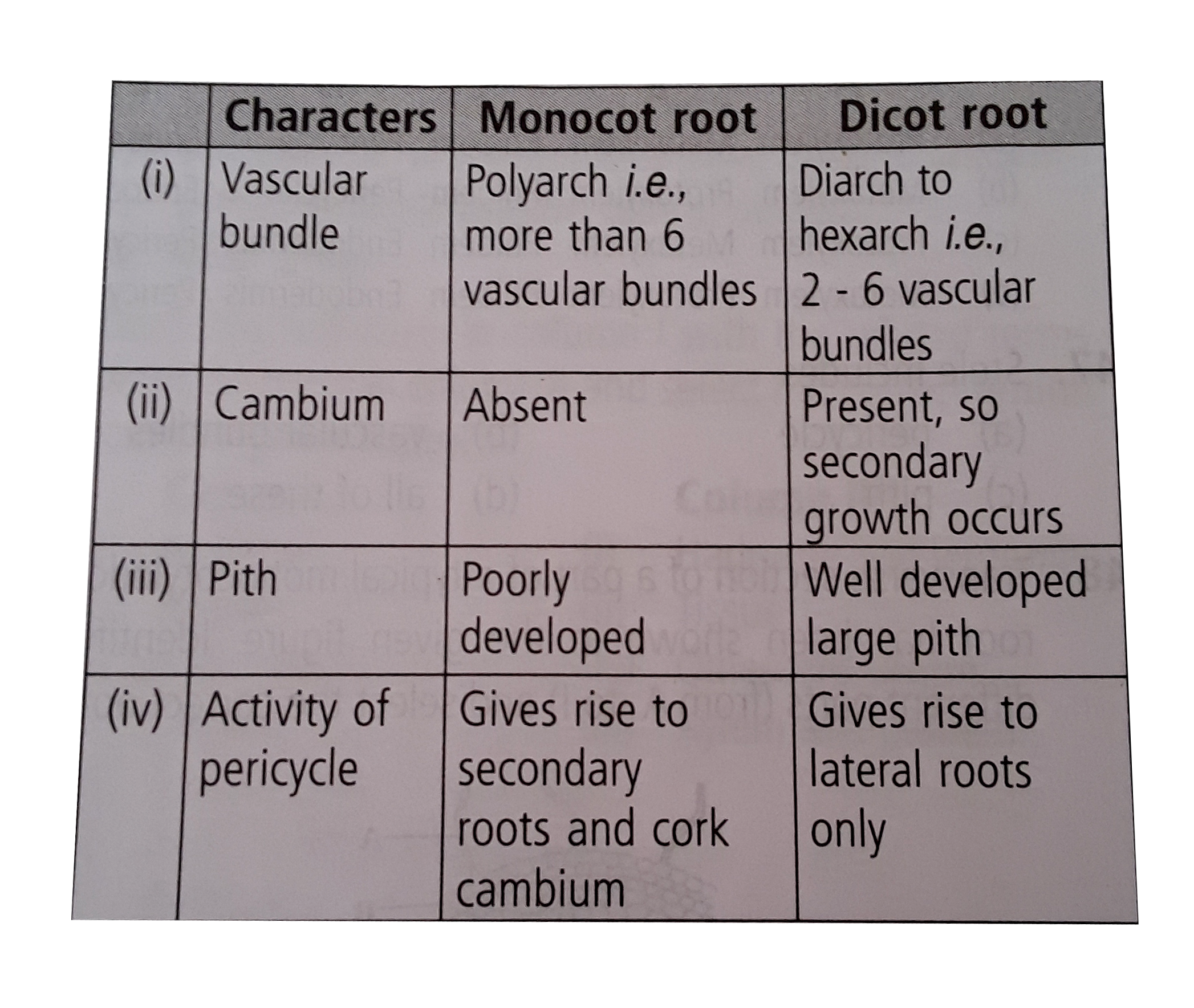In a monocot root
Formation of entire vascular cambium takes place by the cells of pericycle
Hypodermis is absent
Pith is small or inconspicuous
Endodermis is not distinct
To solve the question regarding the characteristics of a monocot root, we need to analyze each statement provided in the options.
1. Examine the first statement: "Formation of entire vascular cambium takes place by the cells of pericycle."
- In monocot roots, vascular cambium is generally absent. The vascular tissue consists of xylem and phloem arranged in a circle, but there is no cambium layer that forms between them. Therefore, this statement is incorrect.
2. Examine the second statement: "Hypodermis is absent."
- In monocot roots, the hypodermis, which is typically made of collenchyma or sclerenchyma cells, is indeed absent. The cortex directly under the epidermis is usually parenchymatous. Thus, this statement is correct.
3. Examine the third statement: "Pith is small or inconspicuous."
- In monocot roots, the pith is usually well-developed and large, not small or inconspicuous. Therefore, this statement is incorrect.
4. Examine the fourth statement: "Endodermis is not distinct."
- The endodermis in monocot roots is quite distinct and can be easily identified. It is well-developed and serves an important function in regulating the flow of water and nutrients. Thus, this statement is incorrect.
Conclusion:
Based on the analysis, the only correct statement regarding monocot roots is that hypodermis is absent.
Final Answer:
The correct option is: Hypodermis is absent.
---
- In monocot roots, vascular cambium is generally absent. The vascular tissue consists of xylem and phloem arranged in a circle, but there is no cambium layer that forms between them. Therefore, this statement is incorrect.
- In monocot roots, the hypodermis, which is typically made of collenchyma or sclerenchyma cells, is indeed absent. The cortex directly under the epidermis is usually parenchymatous. Thus, this statement is correct.
- In monocot roots, the pith is usually well-developed and large, not small or inconspicuous. Therefore, this statement is incorrect.
- The endodermis in monocot roots is quite distinct and can be easily identified. It is well-developed and serves an important function in regulating the flow of water and nutrients. Thus, this statement is incorrect.
Based on the analysis, the only correct statement regarding monocot roots is that hypodermis is absent.
The correct option is: Hypodermis is absent.
Topper's Solved these Questions
Similar Questions
Knowledge Check
- Question 1 - Select One

Following table summarises the differences between a monocot root and a dicot root. Identify the incorrect differences and select the correct optionA(i) and (iii)B(i) and (iv)C(iii) and (iv)D(ii) and (iii)
as compared to a dicot root, a monocot root has
View SolutionIn monocot roots which types of vascular bundles are found
View SolutionThe common character in both dicot root and monocot root is the presence of
View SolutionIn which of the following characters, a monocot root differs from a dicot root?
View SolutionA dicot root differs from a monocot root in which of the following -
View SolutionWhich of these structures is not found in both a monocot root and a dicot stem ?
View SolutionA: In monocot roots, pericyle gives rise to lateral roots and cork cambium.
R: It has tetrach vascualr bundles usually.View Solution

